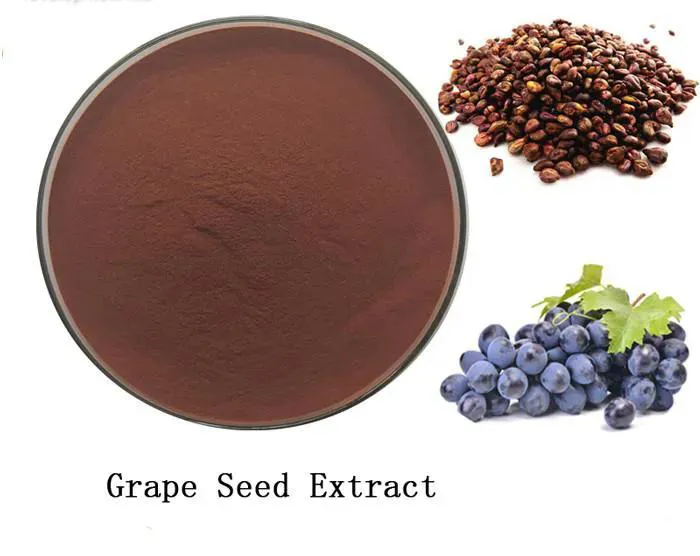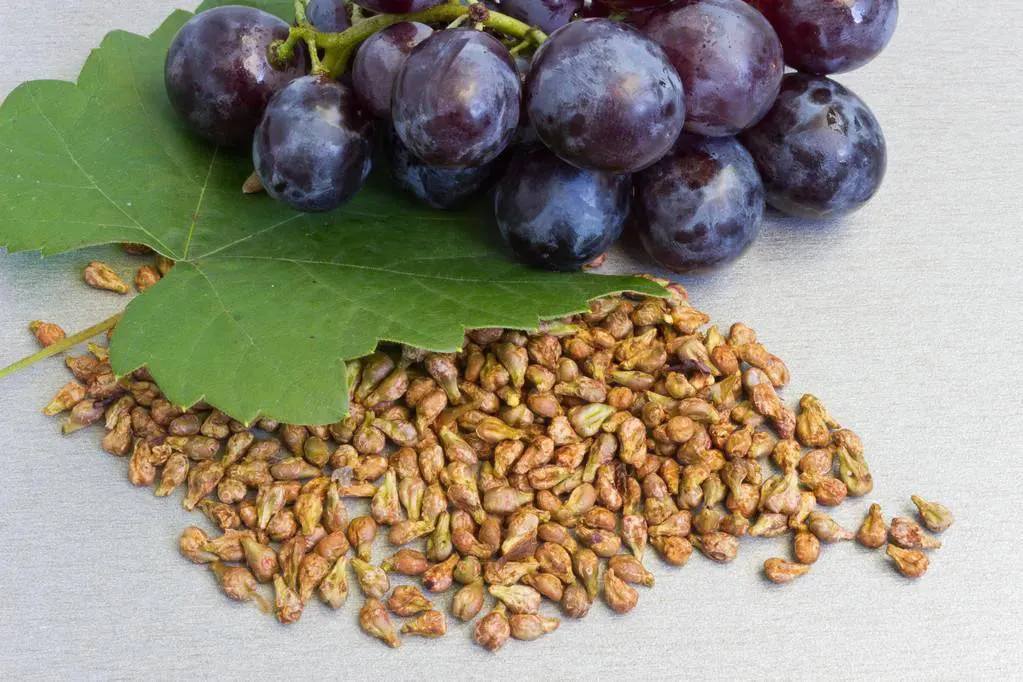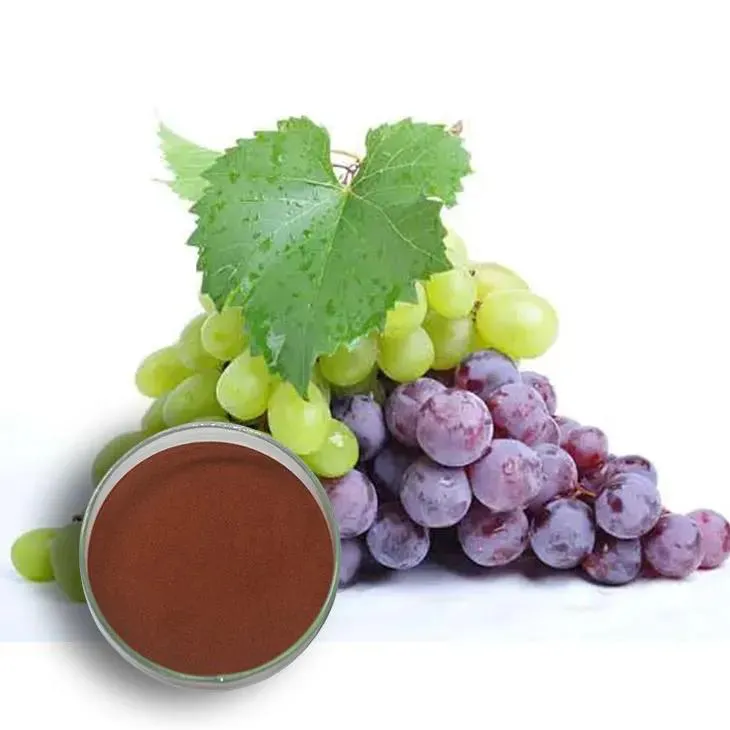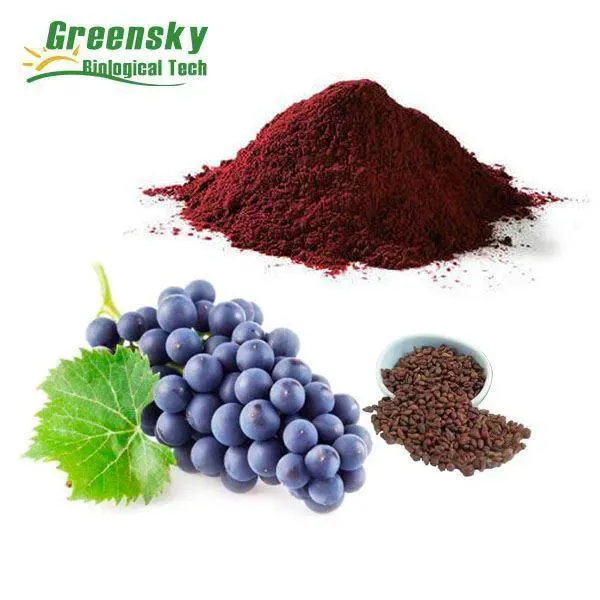- 0086-571-85302990
- sales@greenskybio.com
A Holistic Approach to Tail Pilonidal Cysts: Integrating Grape Seed Extract into Your Treatment Plan
2024-07-07

Introduction
Tail pilonidal cysts are a common and often bothersome condition that can cause pain, discomfort, and potential complications. Holistic treatment approaches are increasingly being explored as an alternative or complementary method to traditional medical interventions. One such interesting addition to the treatment plan is the use of Grape Seed Extract. In this article, we will explore the nature of tail pilonidal cysts, the properties of Grape Seed Extract, and how the two can be integrated for a more comprehensive treatment strategy.

Understanding Tail Pilonidal Cysts
What are they?
Tail pilonidal cysts are small, abnormal sacs that typically develop in the cleft at the top of the buttocks, near the tailbone. They are often filled with hair, debris, and fluid. These cysts can be the result of ingrown hairs, friction, or a combination of factors.Symptoms
- Pain: The cysts can be painful, especially when sitting or during movement. - Swelling: There may be visible swelling in the affected area. - Discharge: Sometimes, there can be a discharge of pus or other fluids from the cyst. - Infection: If left untreated, they are prone to infection, which can lead to more severe symptoms and complications.
Conventional Treatments for Tail Pilonidal Cysts
Medical Approaches
- Antibiotics: In cases where there is an infection, antibiotics may be prescribed to control the growth of bacteria. However, this only treats the infection and not the underlying cause of the cyst. - Drainage: A healthcare provider may drain the cyst if it is filled with fluid or pus. This provides temporary relief but the cyst may recur.Surgical Interventions
- Incision and Drainage: This is a common surgical procedure where the cyst is cut open and drained. It is a relatively simple procedure but has a high recurrence rate. - Excision: In more severe cases, the entire cyst may be removed surgically. This is a more invasive procedure but has a lower recurrence rate if done properly. However, it also comes with a longer recovery time and potential complications such as wound infection and delayed healing.
The Power of Grape Seed Extract
Composition and Properties
Grape seed extract is rich in polyphenols, especially proanthocyanidins. These compounds have strong antioxidant properties. Antioxidants are important as they help to neutralize free radicals in the body. Free radicals are unstable molecules that can cause damage to cells and tissues, which may be relevant in the context of tail pilonidal cysts as they can contribute to inflammation and slow healing.Anti - Inflammatory Effects
The anti - inflammatory properties of grape seed extract can be highly beneficial for tail pilonidal cysts. Inflammation is a key factor in the pain, swelling, and discomfort associated with these cysts. By reducing inflammation, grape seed extract may help to alleviate these symptoms. Studies have shown that the polyphenols in grape seed extract can inhibit the production of inflammatory mediators such as cytokines and prostaglandins.Antimicrobial Activity
Another advantage of grape seed extract is its antimicrobial activity. It has been shown to have activity against a range of bacteria, fungi, and viruses. In the case of tail pilonidal cysts, which are often prone to bacterial infections, this antimicrobial property can help to prevent or control infections. It may work by disrupting the cell membranes of microorganisms or interfering with their metabolic processes.
Integrating Grape Seed Extract into the Treatment Plan
Oral Supplementation
One way to incorporate grape seed extract into the treatment plan is through oral supplementation. Grape seed extract is available in capsule or tablet form. When taking it orally, it is absorbed into the bloodstream and can then reach the affected area. However, it is important to follow the recommended dosage instructions. Typically, a daily dosage of 100 - 300 mg may be effective, but this may vary depending on the individual and the severity of the condition.Topical Application
Grape seed extract can also be applied topically to the area of the tail pilonidal cyst. A diluted solution can be made and applied using a clean cotton swab. This allows for a more direct application to the affected area. However, it is crucial to ensure that the skin is clean and dry before application and to test for any allergic reactions on a small area of skin first.Combining Grape Seed Extract with Conventional Treatments
Enhancing Antibiotic Therapy
When used in combination with antibiotics, grape seed extract can potentially enhance the effectiveness of antibiotic therapy. The antimicrobial activity of grape seed extract can work in synergy with antibiotics to more effectively combat bacterial infections associated with tail pilonidal cysts. For example, if a patient is taking antibiotics for an infected cyst, adding grape seed extract may help to clear the infection more quickly and reduce the risk of recurrence.Supporting Post - Surgical Recovery
After surgical procedures for tail pilonidal cysts, grape seed extract can play a valuable role in post - surgical recovery. Its antioxidant and anti - inflammatory properties can help to reduce inflammation, promote wound healing, and prevent infections. This can lead to a faster recovery time and a lower risk of complications such as wound dehiscence or infection.Lifestyle Changes and Complementary Therapies
Proper Hygiene
Maintaining proper hygiene is crucial in the management of tail pilonidal cysts. This includes keeping the area clean and dry, especially after sweating or bathing. Regularly changing underwear and using mild, non - irritating soaps can also help.Weight Management
Excess weight can put additional pressure on the area of the tail pilonidal cysts, exacerbating symptoms. Maintaining a healthy weight through a balanced diet and regular exercise can help to reduce this pressure and improve the overall condition.Stress Management
Stress can have an impact on the body's immune system and inflammatory response. Practicing stress - management techniques such as meditation, yoga, or deep breathing exercises can help to reduce stress levels and potentially improve the body's ability to deal with tail pilonidal cysts.Monitoring and Adjusting the Treatment Plan
Regular Check - Ups
It is important to have regular check - ups with a healthcare provider. This allows for monitoring of the tail pilonidal cyst's progress, whether it is improving, remaining stable, or worsening. The healthcare provider can also assess the effectiveness of the treatment plan, including the use of grape seed extract, and make any necessary adjustments.Response to Treatment
Pay attention to how the body responds to the treatment. If symptoms improve, the current treatment plan may be continued. However, if there is no improvement or if symptoms worsen, the treatment plan may need to be adjusted. This could involve changing the dosage of grape seed extract, adding or removing other components of the treatment plan, or considering alternative treatments.
Conclusion
Tail pilonidal cysts can be a challenging condition to manage, but a holistic approach that integrates grape seed extract into the treatment plan, along with lifestyle changes and appropriate medical interventions, can offer a more comprehensive and effective strategy. Grape seed extract, with its antioxidant, anti - inflammatory, and antimicrobial properties, has the potential to play a valuable role in both treating and preventing complications associated with tail pilonidal cysts. By working in combination with conventional treatments and making necessary lifestyle adjustments, patients can hope to achieve better outcomes and a higher quality of life.
FAQ:
Q1: What is a tail pilonidal cyst?
A tail pilonidal cyst is a cyst that typically forms near the tailbone, often at the top of the cleft between the buttocks. It can be painful, swollen, and may sometimes become infected.
Q2: How does grape seed extract potentially help in treating tail pilonidal cysts?
Grape seed extract is rich in antioxidants, such as proanthocyanidins. These antioxidants may have anti - inflammatory properties. In the case of tail pilonidal cysts, reducing inflammation can help relieve pain, swelling, and may also assist in the overall healing process. It may also help boost the body's immune system, enabling the body to better fight any associated infections.
Q3: Can grape seed extract be used alone to treat tail pilonidal cysts?
No, grape seed extract should not be used as the sole treatment for tail pilonidal cysts. While it may offer certain benefits in terms of inflammation reduction and immune support, these cysts often require a comprehensive treatment approach. This may include proper hygiene, possible surgical drainage if infected, and the use of antibiotics in some cases, along with the incorporation of grape seed extract as an adjunct therapy.
Q4: Are there any side effects of using grape seed extract for tail pilonidal cysts?
When used in moderation, grape seed extract is generally safe for most people. However, some individuals may experience mild side effects such as stomach upset, nausea, or allergic reactions. It is important to consult a healthcare provider before starting any new supplement, especially if you have pre - existing medical conditions or are taking other medications.
Q5: How should grape seed extract be incorporated into the treatment plan for tail pilonidal cysts?
The exact dosage and method of incorporating grape seed extract into the treatment plan should be determined in consultation with a healthcare provider. Generally, it may be taken orally as a supplement. The treatment plan should also include other aspects such as maintaining good hygiene in the affected area, following any recommended medical procedures like drainage if necessary, and taking appropriate medications as prescribed.
Related literature
- The Role of Antioxidants in the Treatment of Inflammatory Conditions"
- "Integrative Approaches to Cystic Lesions: A Review"
- "Grape Seed Extract: Properties and Potential Therapeutic Applications"
- ▶ Hesperidin
- ▶ citrus bioflavonoids
- ▶ plant extract
- ▶ lycopene
- ▶ Diosmin
- ▶ Grape seed extract
- ▶ Sea buckthorn Juice Powder
- ▶ Beetroot powder
- ▶ Hops Extract
- ▶ Artichoke Extract
- ▶ Reishi mushroom extract
- ▶ Astaxanthin
- ▶ Green Tea Extract
- ▶ Curcumin Extract
- ▶ Horse Chestnut Extract
- ▶ Other Problems
- ▶ Boswellia Serrata Extract
- ▶ Resveratrol Extract
- ▶ Marigold Extract
- ▶ Grape Leaf Extract
- ▶ blog3
- ▶ blog4
- ▶ blog5
-
Stevia Extract
2024-07-07
-
Astaxanthin
2024-07-07
-
Maca Extract
2024-07-07
-
Phellodendron Extract
2024-07-07
-
White mustard seed extract
2024-07-07
-
Artichoke Leaf Extract
2024-07-07
-
Diosmin
2024-07-07
-
Rosemary extract
2024-07-07
-
Lotus leaf extract
2024-07-07
-
Chasteberry Extract
2024-07-07





















